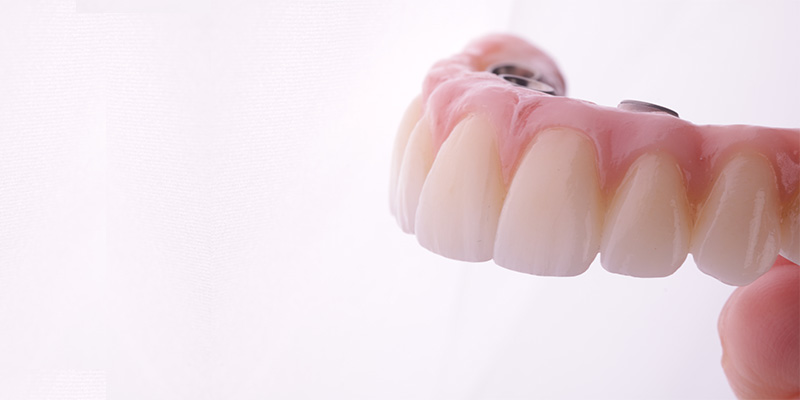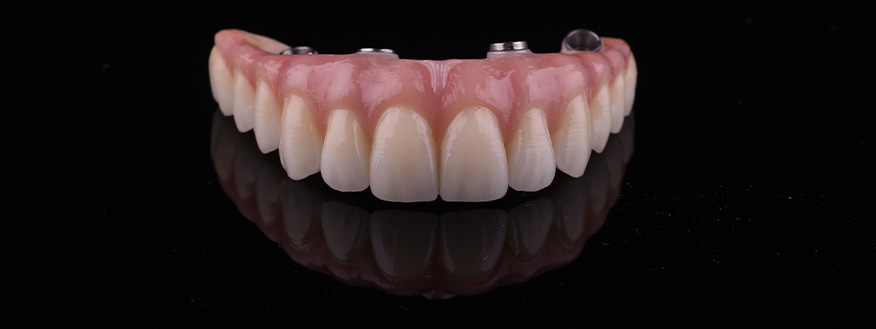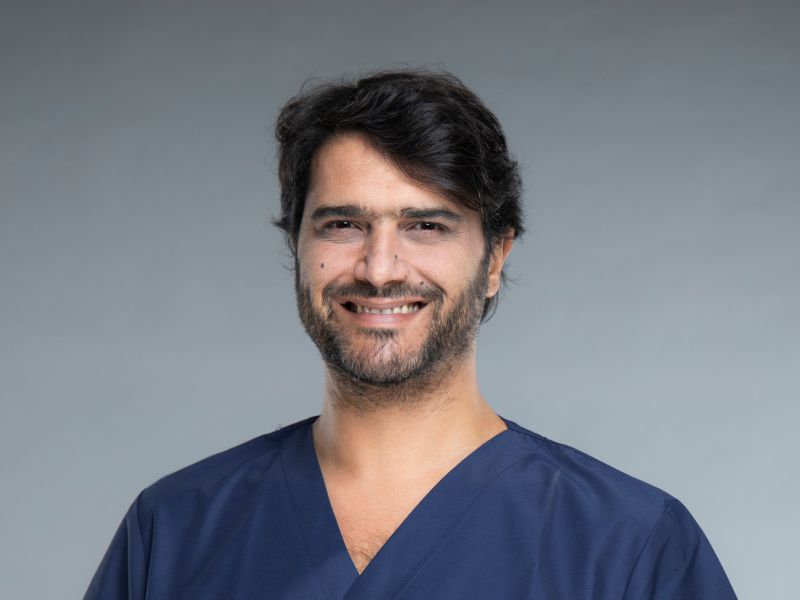
Many patients come to the dentist looking for information about having “an implant in their mouth”, when in fact there are several toothless spaces in their mouth.
What is a dental implant anyway?
Our teeth are physically made up of 2 parts:
- Dental crown – the visible portion of the tooth, with its possible variations in size, colour or position;
- Tooth root – the invisible part of the tooth, covered by bone and gum.
If the crown of the tooth is destroyed but the root is viable, we restore the tooth by applying a customised ceramic crown made in the laboratory that is bonded to the tooth root and restores its shape and function.
On the other hand, if the destruction of the tooth is so great that it is not feasible to use the tooth root, we will have to extract it. Subsequently, the only way for the patient to have a fixed tooth again is to use an “artificial root”, called a dental implant.
This has a body shaped like a titanium screw that “screws” into the bone and a head with a connection system that allows the future ceramic crown to be attached.
Does getting an implant hurt?
- Anaesthesia – Firstly, the surgical procedure for placing dental implants is always accompanied by local anaesthesia. This ensures that the patient feels absolutely nothing during the operation.
- Surgical technique – In addition to anaesthetic support, the clinical protocol followed by dentists is also fundamental to the patient’s well-being. Nowadays, various surgical techniques are used to minimise trauma.
- Medication protocol – Finally, post-operative medication is also fundamental. Patients who have dental implants always follow a medication protocol prescribed by their doctor. And if they follow this protocol, they won’t experience any pain, discomfort or general malaise
How long does a dental implant last?
Dental implants have all the conditions to be the longest-lasting solution when it comes to replacing teeth.
If quality implants are used and the patient strictly follows the post-surgical care given by their dentist, such as oral hygiene, maintenance and dietary restrictions, the dental implant will have a longer lifespan than any other dental treatment.
The first dental implants, applied to humans, were made by Prof Dr Per-Ingvar Brånemark in 1965. His number one patient – Gösta Larsson – died in 2006 with all his implants in his mouth, 41 years after the first implant surgery, demonstrating the longevity of this solution.
But can implants be “rejected”?
There are no 100 per cent success rates in medicine. He certainly isn’t being honest with his practice, and even less so with his patient.
However, the term rejection cannot be applied to dental implants, because the material it is made from (titanium) is totally biocompatible. Our body therefore recognises it as friendly, enveloping it with its cells and incorporating it into the bone during the initial healing period.
However, the implant may fail or not integrate into the bone (not osteointegrate) due to certain factors such as bacterial infection, excessive chewing force or inadequate surgical technique. If all the pre- and post-surgical safety protocols are complied with, the success rate of dental implants is over 98 per cent.

Can implants and teeth be fitted on the same day?
Yes, it is possible. In the past, an implant placement was always followed by a healing period of no less than 6 months.
Nowadays, with the development of surgical techniques and implant surfaces, it is possible to place the implant and the provisional/fixed crown at the same appointment. Of course, this immediate loading procedure depends on the stability of the implant in the bone, the position of the tooth in the arch, the type of patient, etc. and is therefore not possible/recommended for all patients.
If the implant’s poor stability does not allow it to be loaded immediately, which means that it will have to heal inside the bone until it “solidifies”, so that after 3-6 months the definitive crown can be placed.
Can patients who have no bone receive implants?
It is completely wrong to say that the patient has no bone, since bone is the structural basis of our organism and if it has not been surgically removed there will always be some bone volume regardless of the bone analysed.
In the jawbone, tooth loss sometimes leads to major bone resorption. This means that in some patients the bone volume is very small. In these cases, there are only two solutions for the correct placement of an implant.
Either the use of advanced surgical techniques that maximise the use of available bone so that no regenerative technique has to be applied, or the use of individually manufactured implants. If this is not possible, pre-implant bone grafting surgery should be considered.
Never forget that each case is unique and extensive clinical and radiological assessment is mandatory for a good diagnosis and planning.
Who can’t have implants?
There are no absolute restrictions on the placement of dental implants. Obviously, good general health is what counts most when opting for oral rehabilitation with dental implants.
Certain common pathologies, although not preventative, can interfere with the success of implants:
- Untreated diabetics;
- Uncompensated hypertensive patients;
- Patients with heart problems who do not follow treatment;
- People who use medication that affects bone healing;
- Patients undergoing radiotherapy.

Dr. Nuno Bangola
Dentist (Registered with the Ordem do Médicos Dentistas under Nº 4748)
| Exclusive practice in Implantology and Oral Surgery
| Specialist in Oral Surgery, recognised by the College of Specialties of the Portuguese Dental Association
